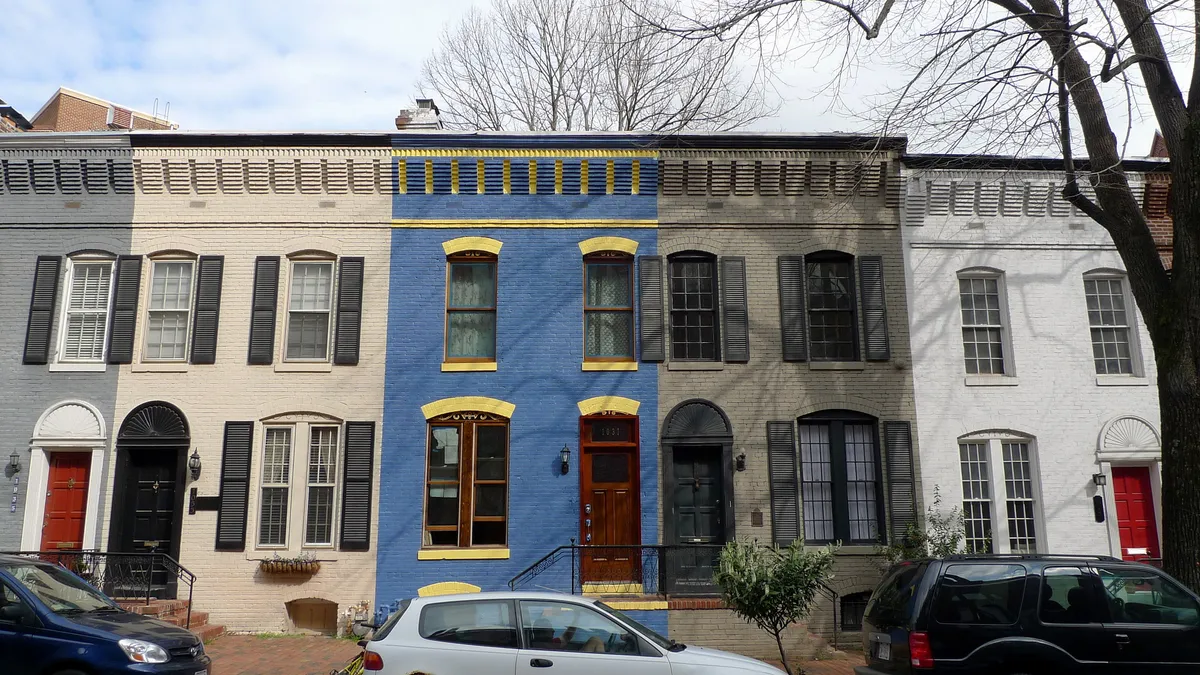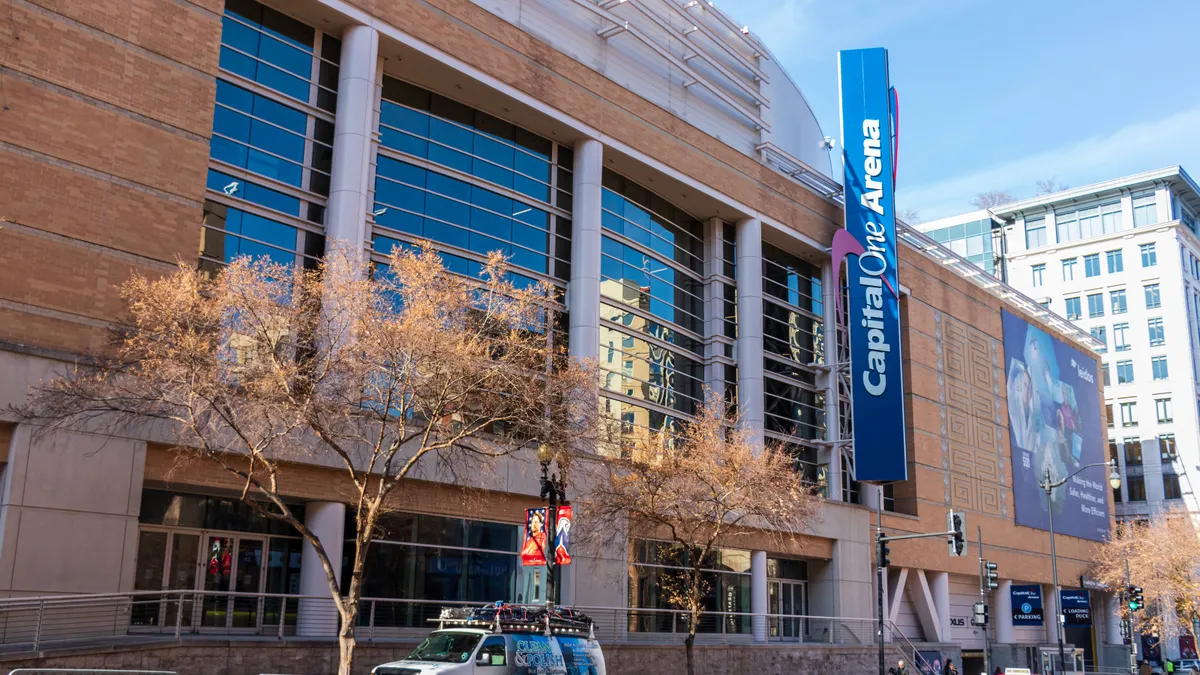Today's housing market is a seller's game. The supply of existing homes for sale has fallen year-over-year each month for roughly the last two years as demand for housing keeps ticking up. New home supply isn't faring much better, but that growth has been more variable.
Meanwhile, millennials — who were ages 18 to 34 in 2015 and the largest living generation at 75.4 million people — are making the slow shift from renting to owning. If most of them follow the current homeownership trajectory, waiting until their early thirties to purchase their first homes, the market is presented with an interesting question: Where is that group going to live until then?
A new homeownership trajectory
One answer is the single-family rental market. Owners are staying in their homes longer today, leaving fewer existing-homes on the market and limiting many younger, first-time buyers’ options, according to Robert Dietz, chief economist for the National Association of Home Builders. According to Zillow, there are almost 9% fewer homes on the market in May than were the year prior.
Low inventory and high prices means prospective buyers may put off buying as they save up for a down payment for a larger home with more features and that they’ll occupy longer. In the meantime, many are looking at single-family rentals because they offer many of the location and product qualities of owned, detached housing.
Today’s first-time homebuyers are older than those of generations past, with the median age of 32, and Frank Nothaft, senior vice president and chief economist at CoreLogic, doesn’t expect that to change anytime soon. Millennials, specifically, have been slower to transition to homeownership than their predecessors, who tended to make the leap in their late twenties, he said.
That shift can be attributed, in part, to the Great Recession. During that period, the oldest millennials found themselves facing a tough job market with high unemployment and tighter lending, making it challenging to afford a home purchase. Many opted to wait out the downturn by returning to college. Today, this group has its eye set on owning, and many already do so.
Younger millennials are following in their footsteps. Employment rates are up and the housing market is stabilizing. Members of this group, too, say they want to own a home, but they face affordability struggles associated with factors like student loan debt, tighter credit and, of course, higher home prices.
In addition to delaying homeownership for a budding generation of would-be buyers, the recession and related foreclosure crisis drove many U.S. households from owner-occupied homes into rentals. That exodus presented an opportunity for investors to purchase those properties and convert them into rentals, which they did. As a result, many of those homes still aren’t — and may never be — owned by their occupants.
A market segment on the rise
Renting grew in favor during and after the downturn. Even today, renting has been deemed favorable for many households, particularly younger ones that have struggled to save up for a down payment but still want a single-family home. One reason for that is high home prices, which are expected to rise 5.1% nationwide over the next year. Single-family rentals haven’t been immune to inflation, but their price growth has been slower in most markets at around 3% to 4% per year, according to Nothaft. That growth signals sustained demand for the segment.
“That burgeoning millennial cohort is one of the most important reasons rental vacancy rates are the lowest we’ve seen in the U.S.,” Nothaft said.
Dietz said the number of owner households has consistently exceeded that of renters, though the trend may be slowing. The number of single-family rental homes grew from 11.3 million in 2005 to 15.2 million in 2015, the fastest-growing of all rental housing type, according to Census Bureau data and National Association of Home Builders estimates. That growth accounted for 56% of the total gains in rental housing stock for the period.
Meanwhile, the national homeownership rate hovers around 63%. While many economists don’t expect it to change drastically over the next few years, it is likely to trend upward. Owing largely to the recession, the number of owner-occupied homes decreased slightly from 2005 to 2015. According to the American Community Survey, there were 74.5 million owner-occupied and 43.7 renter-occupied households as of October 2016.
New for-rent inventory is also on the rise. According to an NAHB analysis of Census Bureau data, built-for-rent home starts totaled 34,000 in 2016, up from 27,000 the year before. Just over 4% of total starts were built-for-rent in Q1 2017, though their market share has hovered under 3%, on average, according to Dietz.
Filling the housing gap
Irvine, CA–based AHV Communities is one company serving the single-family rental market by building large-scale, new construction communities that are managed similar to an apartment complex.
Founder and CEO Mark Wolf said the idea for the company came from a desire to fill a void in the market while providing a value for tenants who were unable to afford a home but wanted the single-family experience.
“If we could do that successfully, we would be the Rolls-Royce of the rental category,” he said.
Initially, the company offered for-sale and rental homes, though it never combined the two in a single community. In 2015, AHV became exclusively built-for-rent after it found a large number of its buyers were barely able to secure the credit needed to own a home.
Wolf said AHV now has active communities in the greater metro areas of Austin, San Antonio and another handful of markets in Texas. The company is planning its next move into the southeastern U.S. Though the it is still going through feasibility studies, Wolf said he hopes to secure deals in Nashville, TN, Charlotte, NC, and Raleigh-Durham, NC, by the end of this year and to break ground in summer 2018.
Wolf said these areas were particularly attractive for AHV and its future tenants because they, like those where AHV has already staked a flag, offer a mix of leading higher education institutions, vibrant food and music scenes, sports teams and strong economies.
Although the model has so far been successful, Wolf says the company likely won’t expand its reach into the pricier coastal metros. These areas, he said, would be too expensive to develop with the limited scope of available lots driving up prices for small swaths of land.
“If we were to build one of our units on a lot in Texas and charge $1,800 a month for rent, and then if we built the same size unit on a smaller lot in California, we’d end up charging $4,000 or more a month for rent," he said. "It just doesn’t make sense."
What this means for millennial homeownership
The single-family rental market is strongest in major coastal metros, like Los Angeles and the San Francisco Bay Area, where many young families can’t afford to buy a home. The trend, however, is also occurring in more affordable communities like Orlando, FL, and Phoenix, which were among the hardest hit by the recession, said Aaron Terrazas, senior economist with Zillow.
Still, Terrazas believes the single-family rental category has room to grow.
“[Demand] is not growing enormously, primarily because there aren't that many deals out there for investors,” he said. “On top of that, young families who can afford to buy are trying to buy.”
During an interview with Construction Dive at PCBC, John Burns, CEO of John Burns Real Estate Consulting, said volume has yet to appear in the built-for-rent category, but that more activity could be expected later this year and early next.
Millennials will likely still buy homes, flouting often-hyperbolized beliefs that they’d rather spend their money on expensive treats like avocado toast than invest in their own equity. Fifty-five percent of the demographic, according to a recent Meyers Research survey, said they would buy a home during the next five years and — 30% estimated they’d make that move in one to three years.
“Young adults have delayed a whole host of life decisions, but increasingly as they get more confident in jobs and in the economy they'll make that leap into homeownership,” Terrazus said. "Before they buy, they'll rent as an interim solution. It really speaks to the changing purposes and needs of American families.”





















